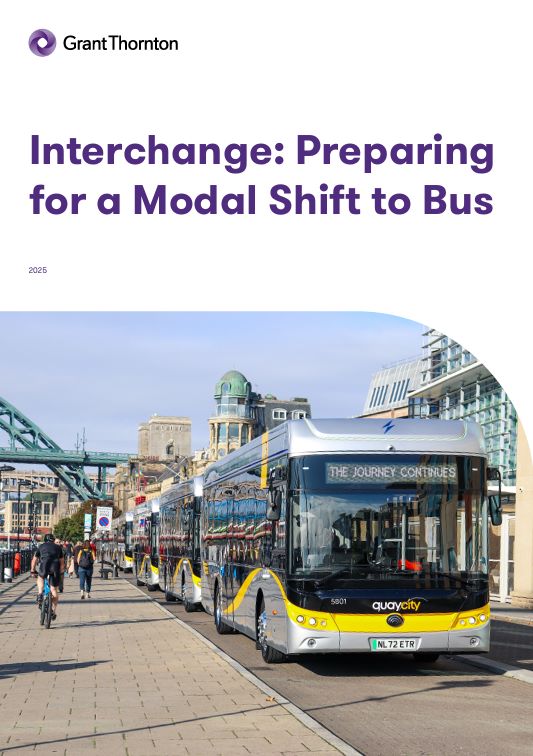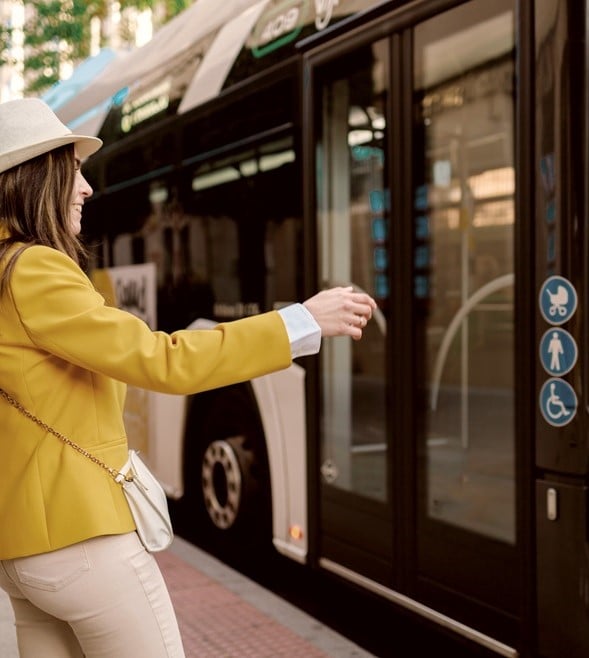
As environmental, social, and economic pressures intensify, the role of buses in shaping a more sustainable and inclusive transport system is ever more critical. Buses connect people to jobs, education, healthcare, and each other. They support local economies and provide essential mobility for millions. But to unlock their full potential, a bold shift in thinking and investment is needed.
At a recent Interchange event, 'Preparing for a modal shift to bus' – hosted in Birmingham by Gowling WLG and Grant Thornton in partnership with the London Transport Museum – leaders from across the public and private sectors explored how local areas can drive meaningful change. Discussions focused on three key themes: data and partnerships, delivery models, and social inclusion.

Read the report
Read our latest report summarising the key discussions from the 'Preparing for a Modal Shift to Bus' conference.
Rethinking delivery models: Beyond structure to impact
A central topic of discussion was the future of bus service delivery. Should local authorities pursue enhanced partnerships (EPs), franchising, or even nationalisation? While these models can help address institutional challenges, the consensus was clear: structure alone doesn’t guarantee better outcomes. What matters most is how well services meet passenger needs.
In a constrained fiscal environment, authorities must prioritise what passengers value most: reliability. Regardless of the delivery model, consistent and dependable service is the single most important factor in encouraging people to choose the bus.
Investment in bus priority measures, such as dedicated lanes and signal priority, was identified as the most effective way to improve reliability, reduce congestion, and cut emissions. Strikingly, a 5% shift from car to bus travel could reduce national emissions by 1.45%, compared to just 0.58% from electrifying the entire UK bus fleet.
Data and digital innovation
Leaders in the bus sector are increasingly aware that data and digital tools are essential to modern, responsive services. From real-time passenger information to digital twins that simulate transport networks, the technology exists to revolutionise how services are planned, operated, and paid for.
The sector is held back, however, by fragmented systems, limited digital skills, and underinvestment. Smaller operators and councils often lack the resources to adopt advanced technologies, and data sharing remains a challenge in deregulated markets. Participants called for national frameworks, shared platforms, and cross-sector collaboration to unlock the full potential of innovation.
Social inclusion: Designing for everyone
Buses are a lifeline for many, especially those without access to private vehicles. But to be truly inclusive, services must be designed with all users in mind – from young people and commuters to older adults and those with disabilities.
Initiatives like free travel for under-22s in Scotland and Project Coral, a national multi-operator contactless ticketing scheme, are making services more accessible and attractive. Yet, as the sector moves toward digital and cashless systems, it must ensure that no one is left behind – particularly the elderly and unbanked (those who don't use banking services).
Accessibility, affordability, and safety were highlighted as universal priorities. Participants also stressed the importance of engaging with communities, conducting equality impact assessments, and adapting services to modern lifestyles, such as increasing Sunday service frequency and supporting shift workers.
A call to action
The message from the Interchange event was clear: the UK has the tools, knowledge, and examples of best practice to deliver a bus system that is reliable, inclusive, and sustainable. But real progress will require:
- targeted investment in bus priority and reliability
- flexible delivery models tailored to local needs
- digital maturity and data-driven decision-making
- inclusive design that reflects the diversity of passengers
With the right leadership, collaboration, and commitment, a modal shift to bus will transform local areas and help tackle our most pressing economic, environmental and social challenges.
For insight and guidance, contact Rohit Rai.







